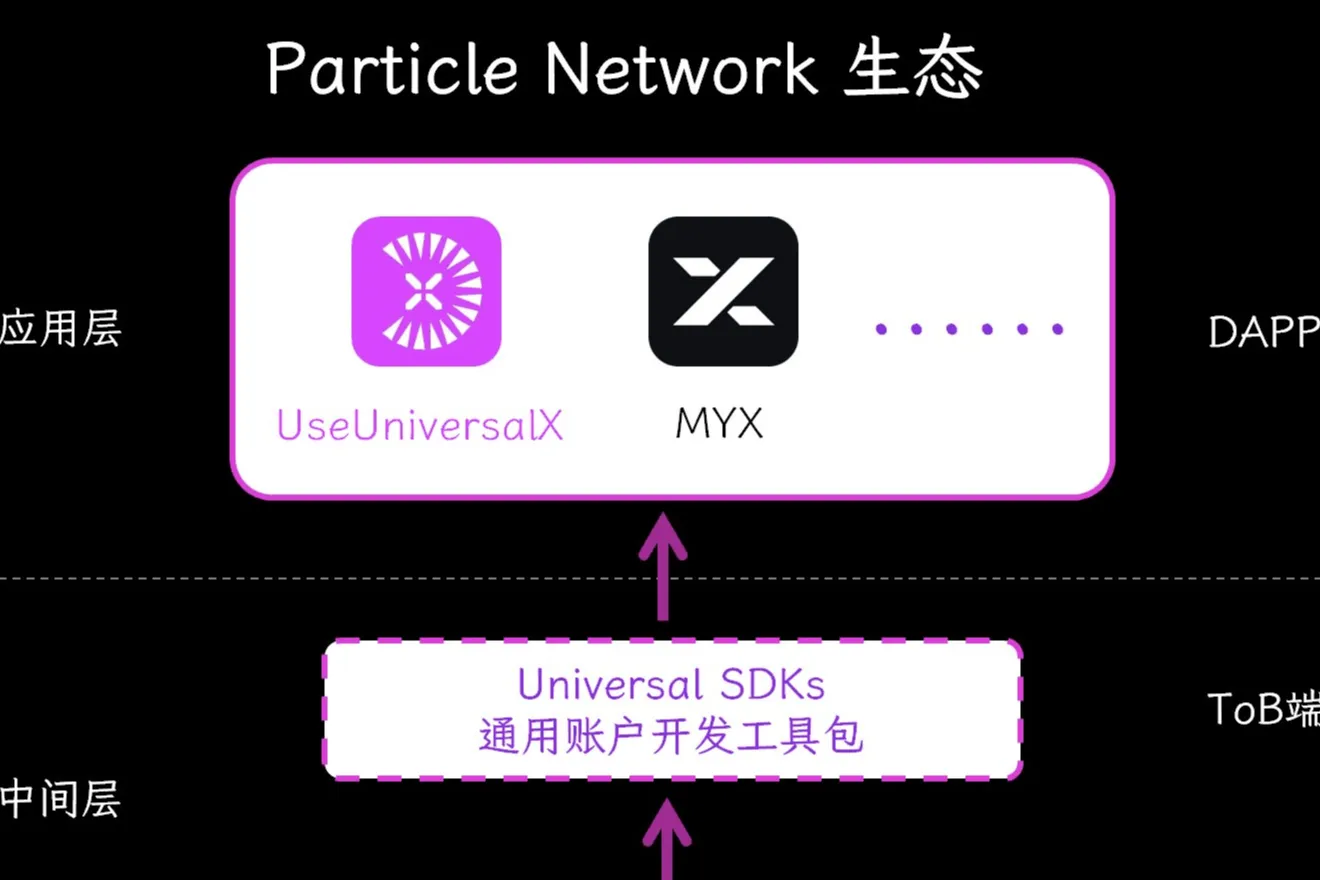Original Title: Why Cathie Wood's ARK Invest Modified Its $1.5M Target | CoinDesk Spotlight
Guest: Cathie Wood, CEO and CIO of ARK Invest
Podcast Date: August 12, 2025
Compiled & Translated by: LenaXin, ChainCatcher
ChainCatcher Editor's Summary:
This article is compiled from a focus interview podcast with CoinDesk and Cathie Wood, CEO and CIO of ARK Invest. She elaborates on how the rapid adoption of stablecoins has influenced her famous $1.5 million Bitcoin prediction, discusses her personal journey into economic research and her unique investment philosophy, and reveals ARK Invest's methodology for crypto asset allocation, operational logic of transparency strategies, and regulatory challenges.
ChainCatcher has compiled and translated this content.
Key Insights
High tax rates actually suppress tax revenue growth.
Chairman Powell's break from consensus reflects not only political considerations as his term approaches next May but also deep-seated economic concerns.
If the high interest rate environment persists, a substantial decline in housing prices will become the only solution to the housing crisis.
The current U.S. economy is on the brink of switching from a "rolling recession" to an "unexpected recovery."
The Ethereum network is becoming the main vehicle for the explosion of stablecoins.
Bitcoin's two core values: an entry point for institutional allocation of digital assets and a digital form of gold.
In a bull market scenario, the target of Bitcoin surpassing one million dollars within five years still holds, and it may even exceed that significantly.
We are more focused on the potential boundaries of AI, which is the true transformative mainline at present.
From an investment perspective, markets like Europe face regulatory fragmentation and geopolitical risks.
I believe AI will soon disrupt traditional quantitative strategies, leading to their complete commoditization.
(1) Cathie's Journey
CoinDesk: What is your earliest impression regarding the market, financial systems, and innovation?
Cathie Wood: During college, I had no clear direction for the future, so I tried various possibilities. Engineering, education, geology, astronomy, physics… I really explored all fields. To be honest, I didn't take economics at that time, partly because my father particularly wanted me to take that course. It wasn't until the last semester of my sophomore year at UCLA that I took economics and became completely fascinated.
After discovering that UCLA did not have an undergraduate business program, I immediately transferred to the University of Southern California, where I met the famous economist Arthur Laffer. It was he who recognized my passion for economics and introduced me to the largest and most prestigious investment firm in Los Angeles at the time: Capital Group.
When I first joined the company, I knew nothing about the financial world, but I quickly found the connection between economics and the real world. The feeling of participating in market activities made me fall in love with the investment industry almost instantly. I realized that this job not only paid me to learn but also helped me interpret the logic of how the world operates. When I joined Capital Group at 20, I decided this would be my lifelong career.
CoinDesk: What ignited your passion for economics?
Cathie Wood: Although I had a close relationship with my father, my rebellious teenage years made me deliberately avoid the economics he recommended. It wasn't until I met Professor Arthur Laffer that his unique teaching style captivated me. Each class started with real-world problems, igniting interest with jokes, and ultimately deriving formulas all over the board. He presented a panoramic view of the ideological clashes among economic schools: Harvard's Keynesianism, Chicago's monetarism, and the supply-side economics he advocated.
This diverse perspective gave me a significant advantage in my career. When Wall Street was predominantly Keynesian in the 1980s, I accurately predicted that Reagan's supply-side reforms would lead to the longest bull market in history. Even during the economic winter when interest rates soared to 15%, I firmly believed in the truth revealed by the Laffer Curve: high tax rates actually suppress tax revenue growth. During my 18 years at Jennison Associates, we often invited my mentor to reinforce this idea. The intellectual foundation laid during those years ultimately allowed me to carve out my own path in the investment world.
(2) Does the Fed's Rare Disagreement Hint at Economic Changes?
CoinDesk: The Fed has just decided to keep interest rates unchanged. What are your views on the interest rate trend?
Cathie Wood: Today's Fed decision is notably marked by two dissenting votes, the first dual dissent since 1993. Chairman Powell has always emphasized consensus in decision-making, and the current break in balance may conceal deeper secrets. There are political considerations as his term approaches next May, reflecting deeper economic concerns.
The two dissenting members may have perceived signs of continued weakness in the real estate market and the failure of tariff transmission, indicating that inflation will continue to decline. The job market shows structural differentiation, with rising unemployment rates among college graduates, reflecting that entry-level positions are being acceleratedly replaced by AI. We have monitored that housing inflation has reached a downward inflection point, but statistical lags obscure the real trend. If the high interest rate environment persists, a substantial decline in housing prices will become the only solution to the housing crisis.
The current U.S. economy is on the brink of switching from a "rolling recession" to an "unexpected recovery." As policy uncertainty fades, productivity leaps in the next 6-9 months will become the biggest highlight. Breakthroughs in technologies such as robotics, energy storage, AI, blockchain, and gene sequencing are creating unprecedented deflationary momentum. This "creative destruction" will lead to polarization: it will be benign deflation for innovators and a fatal shock for incumbents. Current mainstream economists severely underestimate the depth and breadth of this deflationary revolution.
(3) Deregulation + AI Revolution: Will Ethereum Become the Core of Institutional Crypto Infrastructure?
CoinDesk: Regarding the outlook for the next 6-9 months, what role do you foresee for cryptocurrencies in the anticipated recovery?
Cathie Wood: The shift in regulation is reshaping the innovation landscape. The transition from "enforcement regulation" during the Gensler era to a legislatively guided friendly framework is accelerating the rise of "agent-based AI": future AI assistants will make autonomous decisions and collaborate, which requires smart contracts as the underlying support. When AI agents automatically settle with media platforms, the value of the integration of blockchain and AI becomes evident.
As regulation thaws, traditional institutions are making significant moves into blockchain, which not only compresses payment costs from 3.5% to 1% (when global asset management scales reach $250 trillion in five years, a 2% cost saving means a huge efficiency boost) but will also give rise to an agent-based AI-driven micropayment network. These innovations form a "digital infrastructure" that is becoming the core engine of the next productivity revolution, which is the strategic fulcrum of the crypto economy in the new cycle.
CoinDesk: Do you see Ethereum as the foundational layer for building an efficient agent-based AI ecosystem?
Cathie Wood: We continuously track the logic behind institutional choices for digital asset protocols. Although Solana has performed better in the market, institutions like Coinbase and Robinhood still choose Ethereum as the Layer 2 foundation. This confirms our judgment that "Ethereum will become the institutional-grade protocol." This stems from its security advantages brought by a more decentralized architecture, even though its transaction efficiency is not as high as Solana's.
The "bad income" clause in the 1940 Investment Company Act restricts funds from gaining exposure through ETFs, and when a single investment's profit exceeds 10%, it may lose tax benefits.
Now we have broken this limitation to establish Ethereum positions, whose value lies not only in asset reserves. As an early investor in Circle, we have observed that the Ethereum network is becoming the main vehicle for the explosion of stablecoins, and future staking yields will further enhance its utility. This sharply contrasts with MicroStrategy's strategy of merely hoarding Bitcoin.
(4) Long-term Bullish on Bitcoin, Quantum Risks Are Still Early
CoinDesk: Has your stance on Bitcoin changed? I know you previously predicted that Bitcoin would reach $1.5 million by 2030. Has this expectation been adjusted?
Cathie Wood: If we talk about the biggest misjudgment of the past decade, we initially envisioned that Bitcoin would take on the role of stablecoins in emerging markets. Tether co-founder Paolo admitted that it wasn't until the pandemic that he realized Tether had become a revolutionary tool for emerging markets to gain exposure to the dollar. Young people began teaching their parents that "there's no need to exchange currency on the black market anymore."
The explosive adoption of stablecoins has indeed exceeded our expectations, prompting us to possibly adjust the weight of emerging markets in our "2025 Big Vision" model. But the two core value pillars of Bitcoin remain unchanged: one is the entry point for institutional allocation of digital assets, and the other is the digital form of gold.
Based on this, we maintain our original predictive framework. In a bull market scenario, the target of Bitcoin surpassing one million dollars within five years still holds, and it may even exceed that significantly.
CoinDesk: As an investor known for anticipating technological changes, how do you view the potential threat of quantum computing to Bitcoin's security?
Cathie Wood: We have established a Chief Futurist position specifically to study these existential issues. Our former research director Brett and on-chain analysis authority David Puell continue to monitor relevant developments, and currently, quantum computing is still in the stage of quantitative change.
Brett predicts that the quantum threat may first emerge in the late 2030s, as the evolution of AI has far exceeded expectations, even surpassing the imagination of long-term observers like us. Many problems originally planned to rely on quantum computing will be tackled first by AI.
The exponential progress in AI training costs dropping by 75% per year and reasoning costs dropping by 85-98% is continuously pushing its performance curve beyond ceilings. This computing power-driven technological paradigm is reshaping investment directions, and we are more focused on the potential boundaries of AI, which is the true transformative mainline at present.
(5) ARK Invest's Crypto Allocation Methodology
CoinDesk: Aside from Bitcoin, what protocols or projects are currently worth paying attention to?
Cathie Wood: We have currently formed a core allocation matrix of "Bitcoin + Ethereum + Solana" (although we once heavily invested in Solana, we have adjusted our positions based on market dynamics), while continuously monitoring Layer 2 developments.
We are preparing special reports for traditional financial practitioners, using quantitative tools like the Sharpe ratio to analyze the risk-return characteristics of digital assets. Drawing on the model of "Bitcoin Monthly," we will regularly publish on-chain data analyses for Ethereum, Solana, and others in the future. These unique transparent indicators of blockchain are building new evaluation dimensions that traditional markets lack. As more protocols mature, our research landscape will continue to expand.
CoinDesk: You just listed three major crypto ecosystems. So, in the crypto stock space, do you also have your top three picks?
Cathie Wood: In our core investment portfolio (ARKK, ARKF, ARKW), Coinbase, Circle, and Robinhood form a strategic triangle. Although Robinhood is a hybrid asset, a review of quarterly meeting records from three years ago shows that all our inquiries focused on its crypto business layout: "User demand is clear, what is your strategy?" Due to its hesitation at that time, we reduced our holdings, but now its analyst day showcasing the crypto product matrix confirms its transformation commitment.
While MicroStrategy is a benchmark company for Bitcoin, it does not make the top three. We place more value on the diversified value of "ecosystem barometers" like Coinbase. As Ethereum gains institutional recognition, emerging assets like Bitmine Immersions are also starting to enter our strategic observation list, reflecting our three-dimensional layout logic of "fundamental protocols + application ecosystems."
(6) ARK's Three Major Battles: Regulation, Transparency, and AI Challenges
CoinDesk: What "survival-level issues" keep you awake at night?
Cathie Wood: What truly keeps us awake at night is the disastrous regulatory direction in the U.S. over the past four years. We are even starting to seriously consider shifting more research overseas. Especially in the blockchain field, the innovative vitality in the U.S. is being completely stifled. We must recognize that blockchain represents the next generation of the internet revolution, just as the internet once allowed the U.S. to dominate the technological revolution, yet we are actively giving up on this larger-scale technological iteration.
From an investment perspective, markets like Europe face regulatory fragmentation and geopolitical risks. We publicly stated in a live broadcast that SEC Chairman Gensler is a "threat to innovation," and only after saying that did we realize we are an SEC-regulated institution, which indeed poses commercial risks. However, when it threatens the foundation of U.S. tech companies, we must speak out.
CoinDesk: Why choose to publicly share trading information on social media? What strategic significance does this transparency strategy have for your business?
Cathie Wood: After the 2008 financial crisis, we observed a trend where mutual funds were being replaced by ETFs. As an active investor, I had an idea: to embed active strategies within the ETF framework. This innovation not only reduced investment costs by making ETF fees more transparent but also responded to the market's demand for transparency in the post-crisis era.
While peers either shifted to passive investing or chased the "Big Six" in U.S. stocks, leading to investment homogenization, we focused on laying out innovative fields. Although this strategy was overlooked during the bull market of 2021-2024, where tech stocks surged alone, this year's market spread has validated our judgment.
During the pandemic, our practice of sharing research reports and trading records for free unexpectedly went viral in Asia, shaping our global brand. Based on my economics background, I predicted in March 2020 that massive stimulus policies combined with a savings rate surge of 27% would lead to economic overheating. This judgment ultimately proved correct, but the subsequent interest rate hike storm severely impacted non-major innovative companies.
CoinDesk: Have you ever worried that AI might surpass ARK's investment capabilities?
Cathie Wood: Currently, AI is most likely to achieve breakthroughs in passive investing and benchmark-sensitive strategies. This is also the area many investors turned to during the dominance of the "Big Six" in U.S. stocks. In contrast, I am more cautious about the risks of benchmark-sensitive strategies or quantitative strategies that rely on factor analysis (traditional indicators like growth, cash flow quality, volatility, profitability, etc.).
When quantitative analysts study our strategies, they find a significant amount of "residuals" that cannot be explained by existing factors. This is precisely because the future will not simply repeat the past, and we are investing in the future. The essence of quantitative models is based on historical data backtesting, which is exactly where our advantage lies.
I believe AI will soon disrupt traditional quantitative strategies, leading to their complete commoditization. However, our strategies rely on original research, which can be fed into large language models like OpenAI and Grok. While AI can recognize certain patterns, this will actually enhance our research efficiency. For example, in our core analysis work on the "Light's Law," AI will significantly reduce our burden in such time-consuming research.
(Note: Light's Law is a sister law to Moore's Law, stating that for every doubling of output, costs decrease by a fixed proportion.)
But I never underestimate the value of human wisdom, especially the creativity of our research team. The synergy between AI and human researchers will elevate our investment capabilities to new heights.
(7) Dialogue with "Little Cathie"
CoinDesk: If you could go back in time and talk to your 20-year-old self, who was trying various possibilities, what would you tell her?
Cathie Wood: I would appreciate her open-mindedness. That exploratory time was indeed enjoyable; college is the best stage for trying various possibilities.
Diving into a field you love brings lasting satisfaction. The seeds of innovation I planted in the first twenty years of my career have now blossomed.
Looking back at the internet bubble of the late 1990s, the quadrupling of IPOs on the first day highlighted market frenzy. Take gene sequencing as an example; in 2003, the cost was as high as $2.7 billion, but now it only costs $200. The contrast between technological maturity and market performance precisely illustrates collective irrationality.
The current market shows a healthy trend; amidst a generally cautious atmosphere, cutting-edge fields like AI in healthcare are steadily developing. At the same time, investment opportunities are spreading from tech giants to emerging assets like blockchain, which completely aligns with expectations.
Disclaimer
The content of this article does not represent the views of ChainCatcher. The opinions, data, and conclusions in the text represent the personal stance of the original author or interviewee. The compiler maintains a neutral position and does not endorse their accuracy. This does not constitute any professional advice or guidance; readers should exercise caution based on independent judgment. This compilation is for knowledge-sharing purposes only; readers should strictly comply with the laws and regulations of their respective regions and refrain from participating in any illegal financial activities.
Click to learn about job openings at ChainCatcher
Recommended Reading:
The Past, Present, and Future of Ethereum: Vitalik explains how Ethereum became the world's ledger
Tornado Cash developer sentenced: Is "Code is speech" dead?
免责声明:本文章仅代表作者个人观点,不代表本平台的立场和观点。本文章仅供信息分享,不构成对任何人的任何投资建议。用户与作者之间的任何争议,与本平台无关。如网页中刊载的文章或图片涉及侵权,请提供相关的权利证明和身份证明发送邮件到support@aicoin.com,本平台相关工作人员将会进行核查。



